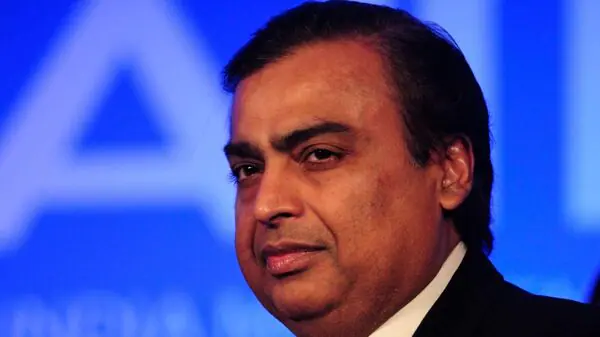
The Reserve Bank of India (RBI) will auction ₹16,000 crore of sovereign green bonds (SGrBs) in two tranches. On January 25 and February 9, the RBI will hold a uniform price auction for 5-year and 10-year green bonds worth Rs 4,000 crore each.
The RBI stated in a release that “the earnings will be spent in public sector projects that contribute to decreasing the carbon intensity of the economy.”
At each auction, the RBI will offer two bonds with maturities of five and ten years, each worth Rs 4,000 crore. Auctions at a uniform price will be used to issue sovereign green bonds.
According to the announcement, retail investors will be given 5% of the sale’s notified amount, and that portion will be eligible for repurchase transactions (Repo).
There would be 5-year and 10-year terms for these green bonds. On January 25, the first tranche would be given for a total of Rs 8,000 crore (Rs 4,000 crore for 5 years and Rs 4,000 crore for 10 years). On February 9, a second tranche auction for Rs 8,000 crore—Rs 4,000 crore each for 5 years and 10 years—will take place.
What are green bonds?
Green bonds are fixed-income securities that are only issued by businesses, governments, and international organizations to finance projects that benefit the environment or the climate.
The initiatives could involve, among other things, green buildings, sustainable transportation, and renewable energy.
These bonds’ earnings are designated for environmental projects.
This is different from regular bonds, which allow the issuer to use the proceeds for a variety of things.
Since the market’s launch in 2007, there have been cumulative issuances on the global green bond market totaling more than USD 1 trillion.
According to the London-based Climate Bonds Initiative, by the end of 2020, 24 national governments would have issued sovereign green, social, and sustainability bonds worth a total of USD 111 billion.
Features of RBI Sovereign Green Bonds:
1. Issuance method:The uniform price auction will be used to issue the SGrBs.
2. Non-competitive bidding facility: According to the “Scheme for Non-competitive Bidding Facility in the Auction of Government of India Dated Securities and Treasury Bills,” 5% of the announced amount of the sale will be set aside for individual investors.
3. Eligibility for repurchase transactions (repo): Repurchase Transactions (Repo) Eligibility: SGrBs will be eligible for Repo transactions under the terms and circumstances outlined in the Reserve Bank’s 2018 Repurchase Transactions (Repo) Directions, as modified.
4. Eligibility for statutory liquidity ratio (SLR): SGrBs will be considered an appropriate investment for statutory liquidity ratio (SLR) purposes.
5. Underwriting: The Primary Dealers’ underwriting in the SGrBs auction will follow the “Revised Scheme of Underwriting Commitment and Liquidity Support.” “issued by the Reserve Bank in its November 14, 2007, RBI/2007-08/186 circular, as revised from time to time.
6. When-issued trading: SGrBs will be eligible for “When Issued” trading “trading in accordance with the instructions on “Transactions in the When Issued market in Central Government Securities” published by the Reserve Bank of India in its circular No. RBI/2018-19/25 of July 24, 2018, as updated from time to time.
7. Tradeability: SGrBs will have secondary market trading rights.
8. Investment by Non-Residents: Under the “Fully Accessible Route,” SGrBs will be designated as specified securities for non-residents to invest in government securities.
What Does a Sovereign Guarantee Mean for Green Bonds?
By issuing sovereign green bonds, governments and authorities send a strong message about climate change and sustainable development.
It will spur the growth of the local market and provide a boost for institutional investors.
It will facilitate the expansion of a local market by offering benchmark pricing, liquidity, and a demonstration effect for local issuers.
Objectives of the Green Bonds:
The Finance Minister stated in the Budget 2022 that the government plans to issue sovereign green bonds to mobilise funds for green projects.
The money will be used for government initiatives to lower the economy’s carbon footprint. The announcement is in line with India’s pledge to achieve net-zero carbon emissions by 2070.
The issuance of SGrBs totaling Rs 16,000 crore was announced in the semi-annual issuance calendar for marketable dated securities for the second half of the fiscal year 2022–2023 on September 29, 2022. Since then, on November 9, 2022, the Indian government has released the Sovereign Green Bond Framework.
The Sovereign Green Bond Framework was subsequently released by the Indian government on November 9, 2022, according to the RBI.
The framework will strengthen India’s commitment to the Nationally Determined Contribution (NDC) targets adopted under the Paris Agreement, according to Finance Minister Nirmala Sithraman, who announced the guidelines in November. It will also help draw domestic and foreign investment into qualified green projects.
Sitharaman stated that sovereign green bonds would be issued to raise money for green initiatives in her address on the 2022–23 budget in February of last year. Prior to that, India’s pledges to cut its carbon emissions under “Panchamrit” were made public by Prime Minister Narendra Modi in November 2021.
Nuclear power projects as well as those where fossil fuels are the primary source of energy are prohibited from being funded with the profits from the sale of green bonds.
Public expenditures made by the government in the form of investments, subsidies, grants-in-aid, tax foregone, or a mix of all or some of these, as well as some operational expenditures, are all considered to be eligible green spending.
Government guidelines for RBI sovereign green bonds:
The framework is applicable to all government-issued sovereign green bonds. The bonds issued under the framework have no project-related risks for the investors.
In November 2022, the Center unveiled a framework for sovereign green bonds, with a committee led by the chief economic advisor examining projects that might be financed but were exempt from big hydropower plants.
According to the framework, the payment of principle and interest on the green bonds will not be based on how well the qualified projects perform. Investors won’t be responsible for any project-related risks as a result.
“The eligible expenditures are restricted to those made by the government up to 12 months prior to issuance.” The goal, according to the structure, is to allocate all of the revenues to projects within 24 months of their issuance.



